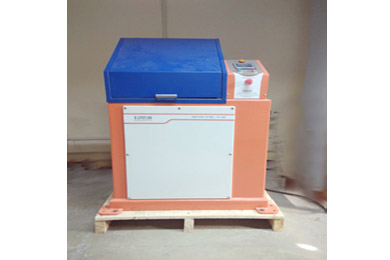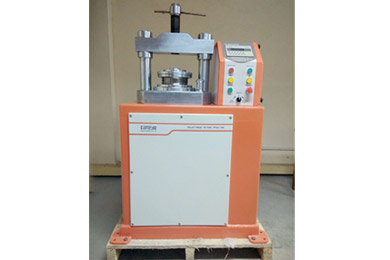Sample processing and preparation facilities
- 10Be and 26Al isotopes chemistry lab
- 14C Graphitization lab
- Magnetic Barrier Laboratory Separator (Model LB-1)
- Jaw crusher, vibratory disk mill & sieve shaker
- Carbon and platinum sample coater
- Glass Beads machine and pelletizing machine for XRF
1. 10Be and 26Al isotopes chemistry lab
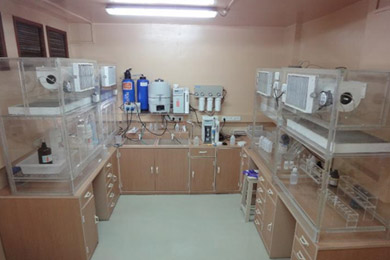
In AMS, the isotope of interest is filtered (separated) from interfering isotopes at various stages. Chemical processing is the first filtering stage. During this stage the isotope of interest is separated from various elements present in the sample and converted in a suitable chemical form to produce high ion yield from the ion source. Chemical processing of sample also provides uniform matrix for analysis and reduces the mass of sample to be put in the ion source and thereby reduces the time needed to attain a given level of precision. Sometimes specific chemical form of the radionuclide reduces isobaric background as well. A clean chemistry laboratory has been developed for sample processing to perform 10Be and 26Al radionuclides. The laboratory is a metal free and equipped with all modern instruments. The lab has been designed to be kept at a positive pressure than the atmosphere with the clean air of about 6000 class. Laminar Flow stations of about 100 class air environment are being utilized for performing the column chemistry for samples processing.
2. Graphitization laboratory
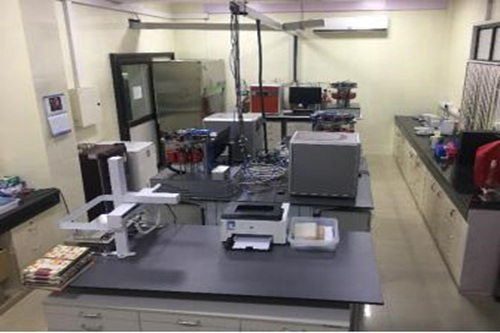
Graphitization laboratory is used for the 14C sample pretreatment and graphitization. It is equipped with three Automated Graphitization Equipment (AGE) with all accessories required for the sample pre treartment. AGE is fully automated system for sample combustion and graphitization. Organic samples are combusted in the Elemental Analyser and purified CO2 is transferred to AGE with helium gas carrier. This CO2 is absorbed on a zeolite trap. Zeolite trap releases the CO2 thermally and transfers it to the reactors. CO2 is reduced into graphite in the reactors on the surface of iron powder at 5800C and water, produced as a by product, is removed by peltier coolers. Carbonate sample are acid hydrolysed in Carbonate Handling System (CHS) and produced CO2 is graphitized in the AGE.
3. Magnetic Barrier Laboratory Separator (Model LB-1)
Frantz make Magnetic barrier separator (Model LB1) is installed for mineral separation to be used for CRN dating or Zircon dating. Most of the minerals fall under three categories of magnetic properties; ferromagnetic, Paramagnetic and Diamagnetic minerals. Magnetic barrier separator uses magnetic field and gravitational field to separate a particular mineral from the mineral mixture. The magnetic separator has a large electromagnet through which mineral mixtures is passed on an inclined metal plate. By varying the magnetic field value and/or the slope of the metal plate the minerals of different magnetic properties can be separated from one another.
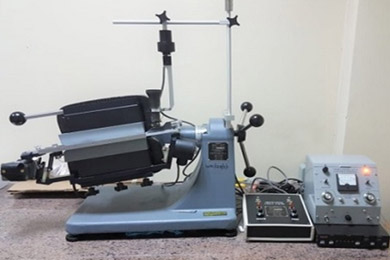
4. Jaw crusher
Jaw Crusher Jaw Crusher is used for crushing large size samples (< 9cm) to smaller sizes (~ 2mm).
Vibratory Disc Mill:
Vibratory Disc mill further reduces sample size by grinding it between two cylindrical discs mounted on a circular and horizontal vibratory platform. The feed size of this unit is < 15mm, which results in output of fine powder of < 20µm.
Sieve shaker:
Sieve shaker contains stack of sieves of different sieve sizes. The Sieve stack is mounted on the vibratory platform, where the speed and duration of vibration can be adjusted. It also has an option of wet sieving.
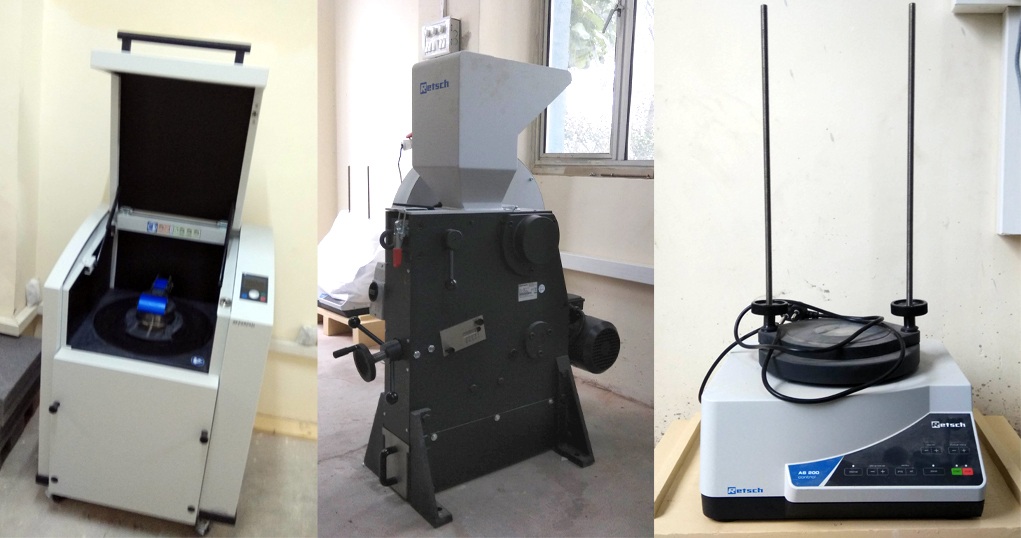
5. Carbon and platinum sample coater
Carbon and platinum coater are used to create ultra-thin layer of conductive material on a non- conducting speciment for scanning electron microscope in order to prevent it from electrostatic charge. Electrically conductive coating of carbon or platinum prevents the charging of specimen. Coating also causes the enhancement of secondary electrons which further causes the enhancement of signal to noise ratio.we have two coating units:
- Platinum Coater (JEC-3000FC, JEOL):Film Thickness of coating can be adjusted by distance from the target as well as sputtering time.
- Carbon Coater (EC-32010CC, JEOL): Film thickness of coating can be influenced by adjusting the height of the sample plate.
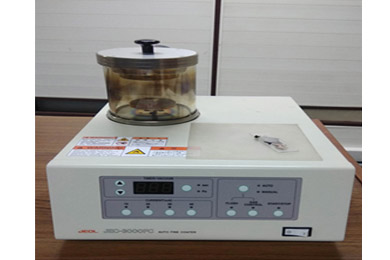
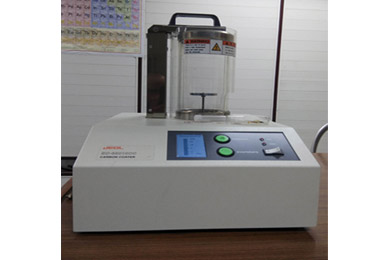
6. Fuse Beads machine and pelletizing machine for XRF
A pellet pressed machine from Kameo is installed which pressed pellet of 8 gram sample with diameter size of 37 mm under pressure of 40 tons. A binding agent polyvinyl alcohol is used for improving the quality of the pellet. A vibratory cup mill is installed for the crushing of the sample into suitable powder for pellet preparation. A fused bead machine is also installed for preparing the fused bead pellet with ‘Lithium tetraborate’ as the flux material at around 1100 degree centigrade.
